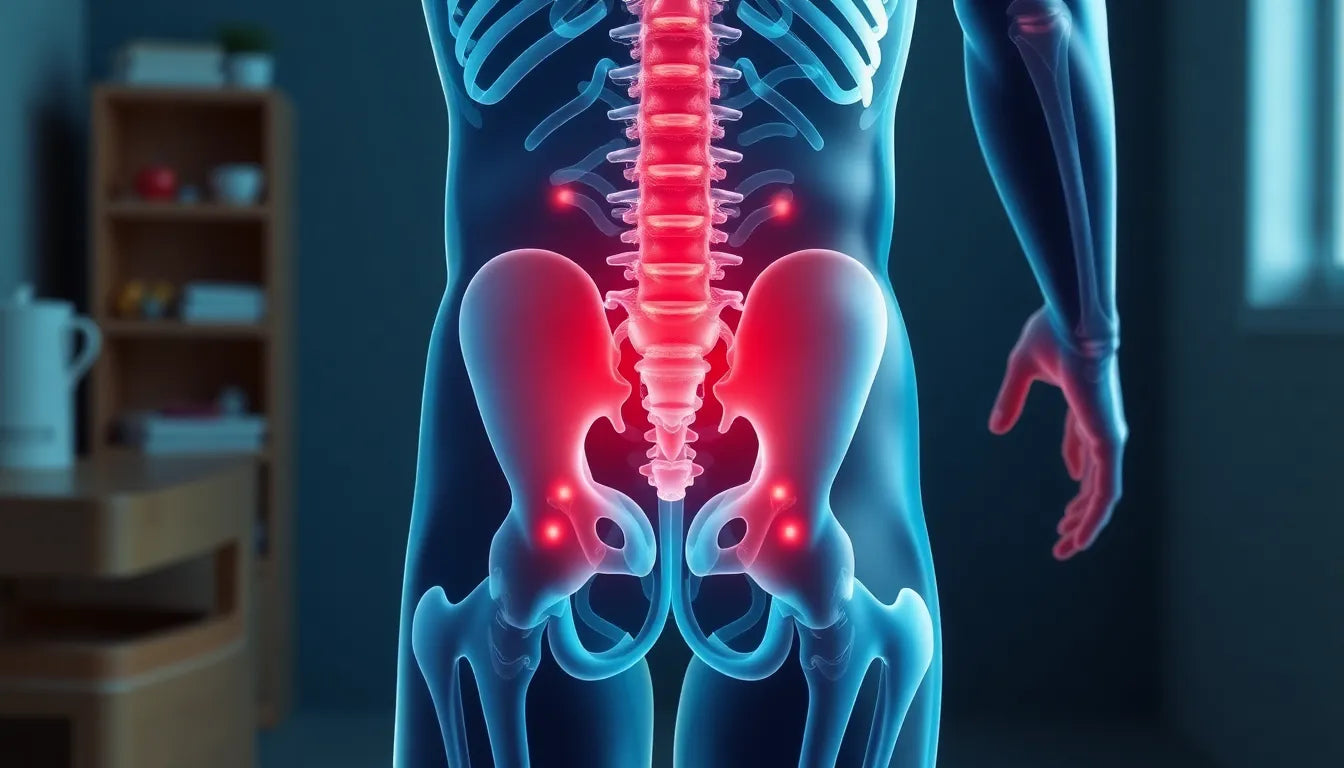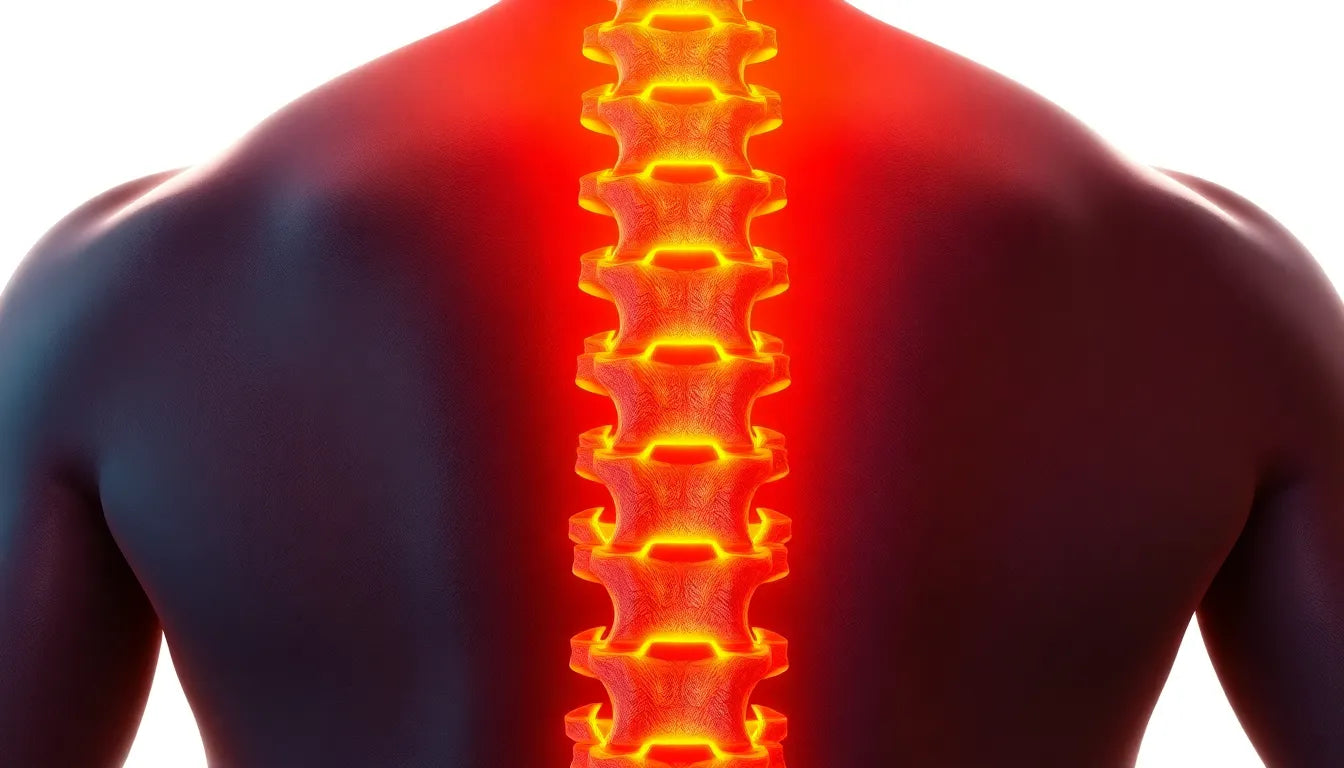Understanding the intricacies of a herniated disc and its impact on the leg is crucial for anyone experiencing this type of discomfort. A herniated disc occurs when the soft, jelly-like center of a spinal disc pushes through a crack in the tougher exterior casing. This condition is particularly common in the lumbar region of the spine, which bears much of the body's weight and is responsible for a significant range of motion. When a disc herniates in this area, it can press on the nerves that travel down the legs, leading to what's commonly referred to as sciatica.
the connection between herniated discs and leg pain
The term "sciatica" describes the symptoms of leg pain—and possibly tingling, numbness, or weakness—that originate in the lower back and travel through the buttock and down the large sciatic nerve in the back of each leg. This nerve compression is often due to a herniated disc, which can put pressure on the nerve roots. While not all herniated discs cause symptoms, those that do can significantly affect daily life, making even simple activities like walking or sitting uncomfortable.
Herniated discs are relatively common, especially as people age or engage in activities that strain the spine. The prevalence of this condition means it affects a wide range of individuals, impacting their quality of life and ability to perform everyday tasks. Understanding how a herniated disc leads to leg pain is essential for recognizing the condition and seeking appropriate treatment.
symptoms and the path of pain
The symptoms associated with a herniated disc in the lower back can vary but often include persistent pain, numbness, and muscle weakness in the leg. The pain typically follows the path of the affected nerve, radiating from the lower back down to the leg, and sometimes extending into the foot. This pathway of pain is a key indicator of the condition, helping differentiate it from other types of back pain.
It's important to note that not all herniated discs result in symptoms, but when they do, leg pain is usually the most noticeable sign. This understanding is crucial for effective diagnosis and treatment, as early intervention can prevent the condition from worsening. By recognizing these symptoms, individuals can take proactive steps to manage their condition and seek medical advice to alleviate their discomfort.
symptoms and causes of herniated disc leg pain
A herniated disc in the lumbar spine can lead to a range of symptoms that affect the leg, primarily due to the compression of the sciatic nerve. One of the most common symptoms is pain that radiates down one or both legs, often following the path of the sciatic nerve. This pain can vary in intensity, from a mild ache to a sharp, burning sensation, and may worsen with certain movements or prolonged sitting.
In addition to pain, individuals may experience numbness or tingling sensations in the leg or foot. This occurs because the herniated disc can affect the nerve signals that travel to these areas, leading to altered sensations. Muscle weakness is another possible symptom, which can impact mobility and balance, making it difficult to perform everyday activities such as walking or climbing stairs.
The causes of herniated discs are varied, but they often involve age-related degeneration. As we age, the spinal discs lose some of their water content, making them less flexible and more prone to tearing or rupturing with even minor strains or injuries. Other causes can include sudden injury, heavy lifting, or repetitive movements that place stress on the spine.
diagnosis: pinpointing the problem
Accurate diagnosis of a herniated disc is essential for effective treatment. The diagnostic process typically begins with a thorough physical examination. During this exam, a healthcare provider will assess the patient's pain levels, check reflexes, and test muscle strength to identify any signs of nerve compression.
Imaging tests are often used to confirm the presence of a herniated disc. An MRI is the most common imaging technique, as it provides detailed images of the spine and can clearly show the extent of disc herniation. In some cases, a CT scan or X-ray may be used to provide additional information.
To further assess nerve involvement, nerve conduction studies or electromyography (EMG) may be conducted. These tests help determine how well electrical signals are traveling through the nerves and can pinpoint areas of nerve damage or dysfunction.
conservative (non-surgical) treatments
For many individuals, conservative treatments are the first line of defense against herniated disc pain in the leg. Rest and activity modification are often recommended to alleviate strain on the spine, although prolonged bed rest is generally discouraged as it can lead to muscle deconditioning.
Pain relief is typically achieved through the use of nonsteroidal anti-inflammatory drugs (NSAIDs) or acetaminophen. These medications can help reduce inflammation and alleviate pain, making it easier for individuals to engage in physical therapy.
Physical therapy plays a crucial role in the management of herniated disc symptoms. A physical therapist will design a program that includes exercises to stretch and strengthen the muscles of the back and legs, improve flexibility, and enhance overall mobility. This approach not only helps relieve current symptoms but also reduces the risk of future injuries.
In cases of severe pain, muscle relaxants or prescription medications may be prescribed. For persistent pain that doesn't respond to other treatments, epidural steroid injections can be considered. These injections deliver medication directly to the inflamed area, providing relief by reducing swelling and irritation around the affected nerve.
Overall, most individuals with a herniated disc find significant relief through these conservative measures. However, it is important to monitor symptoms closely and seek medical advice if they worsen or do not improve over time. Understanding the available treatment options can empower individuals to make informed decisions about their care and ultimately find relief from the discomfort caused by a herniated disc in the leg.
surgical approaches for herniated disc leg pain
While most individuals find relief from herniated disc pain in the leg through conservative treatments, there are situations where surgery may become necessary. Surgical intervention is typically considered when non-surgical methods fail to alleviate symptoms, or when the condition worsens, leading to progressive leg weakness, severe pain that does not respond to medication, or "red flag" symptoms such as loss of bowel or bladder control.
Among the surgical options available, a discectomy or microdiscectomy is one of the most common procedures. These surgeries involve removing the portion of the herniated disc that is pressing on the nerve, thereby relieving pain and other symptoms. Microdiscectomy is a minimally invasive technique that uses smaller incisions, which can result in quicker recovery times and less postoperative discomfort.
In certain cases, spinal fusion or artificial disc replacement may be recommended, particularly if there is significant spinal instability or degeneration. These procedures aim to stabilize the spine and maintain its alignment, potentially improving long-term outcomes. However, they are generally reserved for more severe cases or when other treatments have not been successful.
prognosis and recovery expectations
The prognosis for individuals with a herniated disc in the leg is generally positive, with most patients experiencing significant improvement with time and appropriate treatment. Conservative measures often lead to relief within four to six weeks, and many individuals can return to their normal activities without the need for surgery.
For those who undergo surgical intervention, recovery times can vary based on the specific procedure and the individual's overall health. However, many patients report a reduction in leg pain shortly after surgery and can gradually resume their daily activities as they heal. It is crucial to follow post-operative care instructions and engage in any recommended rehabilitation exercises to support recovery and prevent future issues.
Seeking medical attention for "red flag" symptoms is essential. These include difficulty walking, significant weakness in the legs, or any changes in bowel or bladder function. Early intervention in such cases can prevent further complications and improve outcomes.
frequently asked questions
Can herniated discs cause leg pain?
Yes, herniated discs in the lumbar spine can compress nerves, leading to pain that radiates down the leg, commonly known as sciatica.
What are the best treatments for herniated disc leg pain?
Initial treatments include rest, pain medication, and physical therapy. Surgery is considered if these are ineffective in relieving symptoms.
When is surgery needed for a herniated disc?
Surgery is generally reserved for severe cases where conservative treatments fail or symptoms worsen significantly, such as progressive leg weakness or loss of bowel/bladder control.
How long does it take to recover from a herniated disc?
Many people see improvement within 4–6 weeks with conservative treatment, though recovery can vary depending on the severity of the condition and the chosen treatment method.
What are the warning signs that require immediate medical attention?
Seek urgent care for symptoms like loss of bladder/bowel control, severe leg weakness, or difficulty walking, as these may indicate serious complications.
Sources
- Mayo Clinic. "Herniated disk - Diagnosis and treatment."
- Cleveland Clinic. "Herniated Disk (Slipped or Bulging Disk)."
- Mayo Clinic. "Herniated disk - Symptoms and causes."
- University of Maryland. "A Patient's Guide to Lumbar Herniated Disc."
- American Association of Neurological Surgeons. "Herniated Disc."
- Cuellar Spine. "Herniated Disc Treatment Options."
- WebMD. "Herniated Disk Treatment, Remedies, and Medications."


















